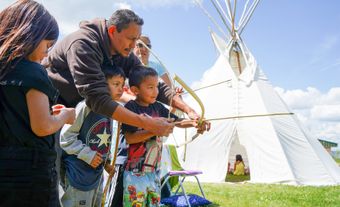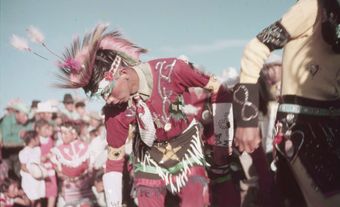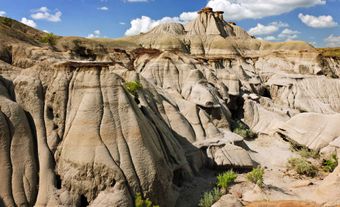Raymond, Alberta, incorporated as a town in 1903, population 3,708 (2016 census), 3,743 (2011 census). The town of Raymond is located in southern Alberta, approximately 35 km south of Lethbridge. In the early 1900s the area was settled by Mormons and Japanese labourers (see also Japanese Canadians). The Raymond Stampede, Canada’s first rodeo, has been held in the town since 1902.
Indigenous Peoples and Treaties
Raymond is located on the traditional territory of the Siksikaitsitapi (Blackfoot Confederacy), Stoney-Nakoda and Tsuut’ina. It is covered by Treaty 7, signed in 1877. Today, Kainai Nation’s primary reserve, Blood 148, is located just west of Raymond. (See also Reserves in Alberta.)
Settlement
In the 1880s, Charles Ora Card led the first group of Mormon settlers from Utah to what is now southern Alberta. Successful settlements at Cardston, Magrath and Stirling made other Utah Mormons interested in the prospects of the area. In 1901, Jesse Knight, a Utah entrepreneur and philanthropist, sent his sons William and Raymond north to seek out land and opportunities in Alberta. Knight purchased land and later that year began work on a large sugar factory. The factory was completed in 1903, and the settlement that grew up around it was called Raymond, after Knight’s son. The factory processed the sugar beets that Mormon farmers had planted throughout the region.
Development and Economy
Raymond was soon one of the fastest-growing communities in southern Alberta. Unfortunately, the sugar factory was not profitable. It closed in 1914. Before the factory closed, however, a number of Japanese labourers had arrived to work in the sugar beet industry. These Japanese immigrants stayed and formed a distinctive community in the Raymond area (see alsoJapanese Canadians). In 1929 a Buddhist church, now a provincial historic site, opened in Raymond. Following the collapse of Jesse Knight’s sugar venture, area farmers switched to wheat and other grain production, and the use of irrigation expanded. Raymond became a service and commercial centre for the surrounding agricultural district.

 Share on Facebook
Share on Facebook Share on X
Share on X Share by Email
Share by Email Share on Google Classroom
Share on Google Classroom



